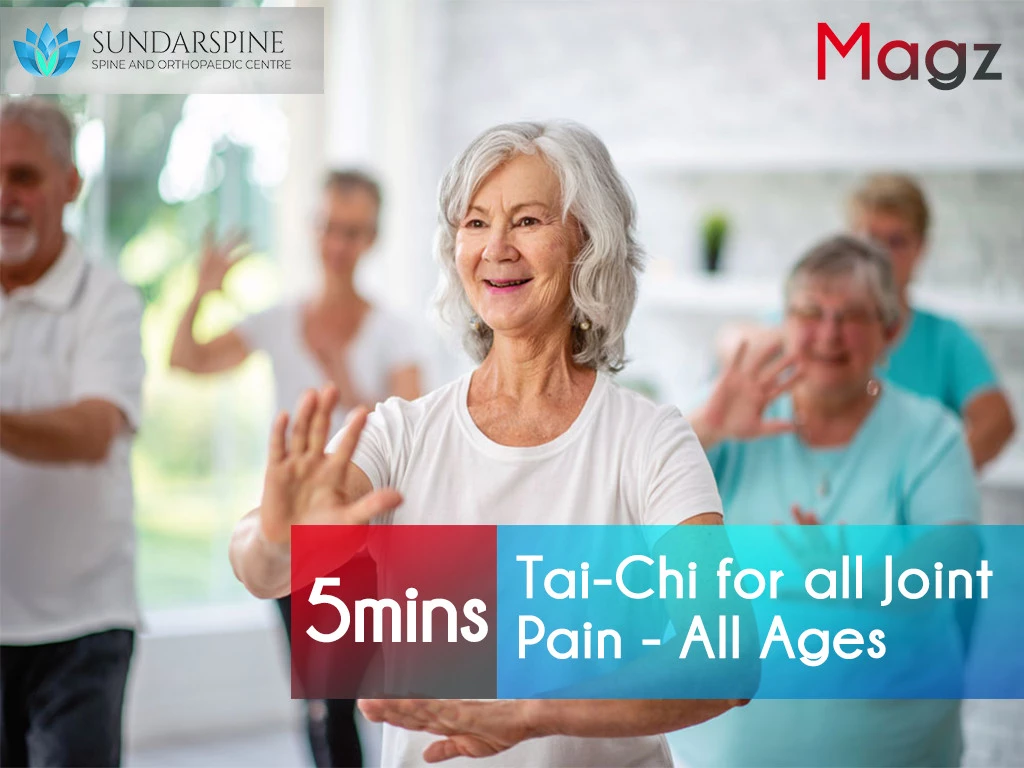
Tai Chi is a relaxing and gentle workout that is suitable for people of all ages, even those with chronic joint discomfort. This workout provides flexibility, muscular strengthening, and endurance training. Tai Chi has the capacity to improve the health of elderly without exacerbating existing issues. As a result, older people are more likely to begin and maintain an exercise routine.
Origin of Tai-chi
Despite the fact that Tai-chi has a long history in China, it was invented and was widely followed in India around 527 A.D. Tai-chi along with the Shaolin martial arts technique, were taught to the Shaolin Temple monks by an Indian monk – Ta Mo. If you are interested, kindly read this article Tai Chi Origin and History – Bodhidharma to Modern Tai Chi Legends
Such an elegant art of an exercise lost to time has been rekindled with renewed interest in many who are learning and practicing Tai-chi nowadays.
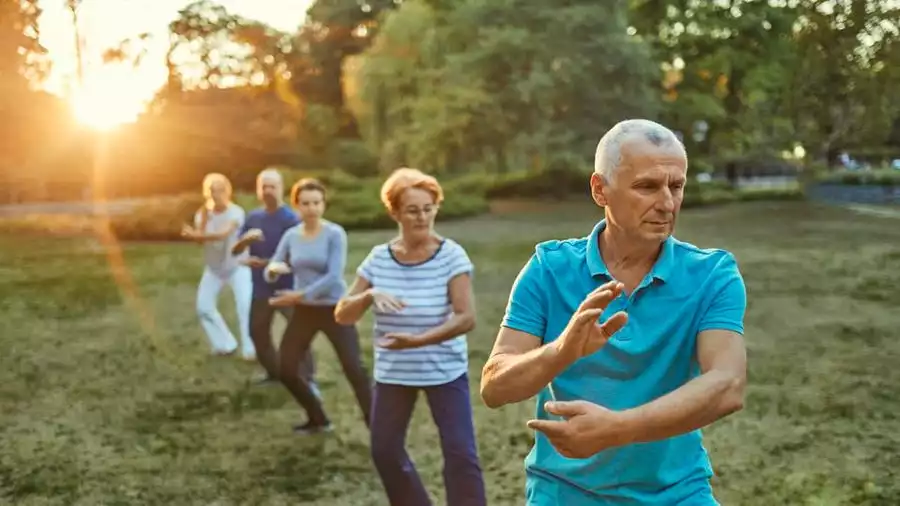
There isn’t enough space in this article to cover all of the data that supports the advantages of practising tai chi. Basic athletic abilities such as balance, power and strength, stamina, aerobic capacity, agility, flexibility, speed, precision, and proprioception are developed when people practise tai chi.
Tai chi has also been shown to be useful in the treatment of cardiovascular disease and chronic obstructive lung disease (COPD). It can help people with fibromyalgia and Parkinson’s disease feel better by reducing chronic pain and improving neurological function. It’s also excellent for osteoarthritis pain management and physical therapy, helping joints to become more flexible and useful as they were at a younger age.
Starting with a Breather
Excited about incorporating tai-chi into your healthy living plan? Here’s a brief breathing exercise you can learn right now.
- Standing or sitting, place your hands on your thighs and begin. Gently press your tongue to the roof of your mouth. Breathe slowly and deeply through your nose.
- Breathe in and out in sync with your movements. Raise your relaxed hands to face level while you softly inhale through your nose.
- Slowly exhale and return your hands to your legs. Deeply unwind.
- Rep 10 times more.
Now lets jump right in:
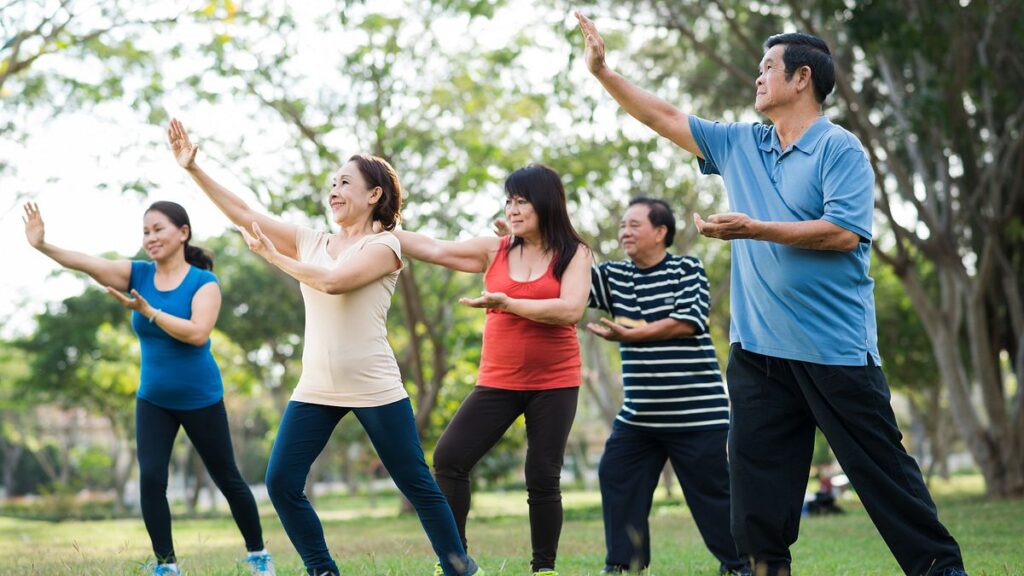
1. Tai-chi Warm-up
Warming up the body, much like any other activity, is critical to avoiding injuries and facilitating free Tai Chi movements. It is intended to “create a relaxed mindset and encourage a state of well-being.”
The waist loosening practice is an example of a fundamental Tai Chi warm-up:
1. Stand with your feet slightly wider than hip-width apart on the floor.
2. Keep your arms at your sides and relax.
3. Let your arms dangle lightly as you rotate your hips to the right and left. Your arms should flap against your torso as you rotate each time.
4. Repeat for another 1-2 minutes or until your body feels warm.
5. You can then include your neck, shoulders, and spine in the rotations, making each movement smooth.
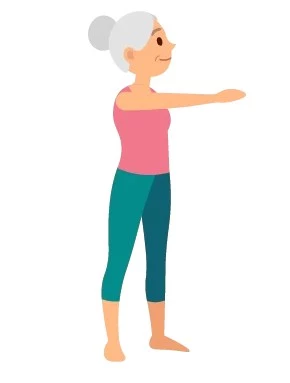
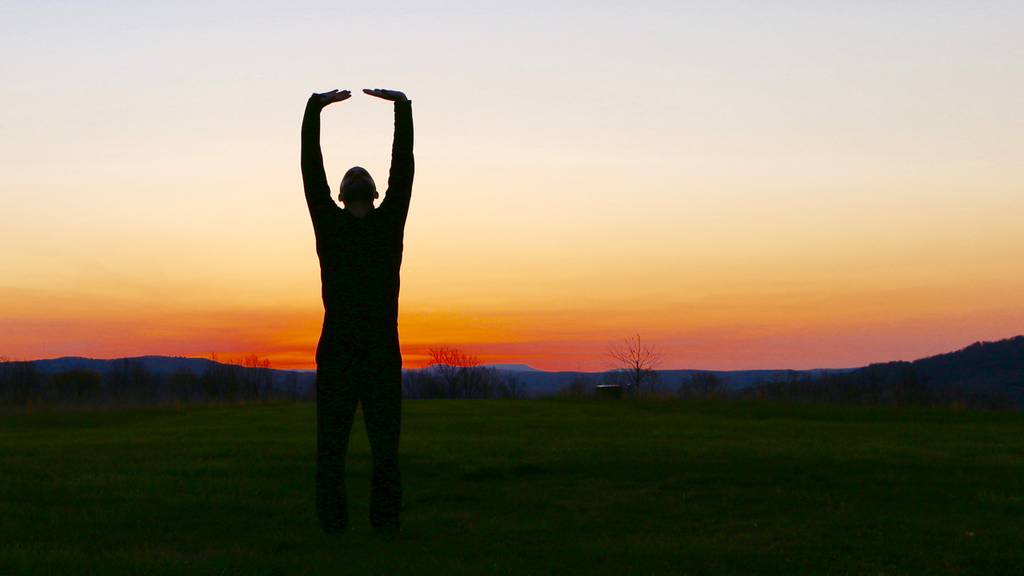
2. Touching the Sky
Touch the sky is a simple, beginner-level tai chi exercise. It’s also an effective warm-up before performing more intense exercises and is a good way to learn how to coordinate breathing with movement.
1. Take a comfortable chair and sit up straight.
2. Place your hands in your lap, palms facing upward and fingertips pointing in the same direction.
3. Raise your hands to chest level in front of you, turn your palms outward, and elevate your hands above your head while you inhale slowly and deeply.
4. Keep your elbows relaxed and slightly bent while reaching with your arms.
5. Relax your arms even further as you exhale slowly and deeply, then gently lower them to your sides.
6. Return your hands to the starting position with your palms facing upward at the end of the breath.
7. Do this ten times more.
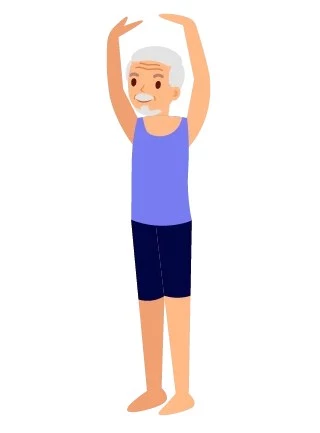
3. Windmill Exercise
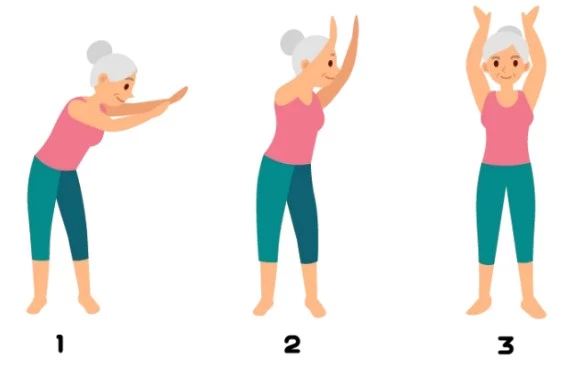
This simple exercise increases flexibility and helps to loosen up your spine.
1. Place your feet flat on the floor, little wider than shoulder width apart.
2. Let go of tension in your shoulders and relax them. Allow your arms to hang free by your sides.
3. Place your hands in front of your body, fingers pointing down to the ground.
4. Inhale and raise your arms to the centre of your body, bringing them over your head with your fingers pointing.
5. Extend your arms toward the ceiling and arch your back slightly.
6. Exhale and slowly bend forward to the floor, sliding your hands down through your body’s centre.
7. Bend forward from your hips and hang your arms in front of you freely.
8. Take a deep breath in and return to your starting position.
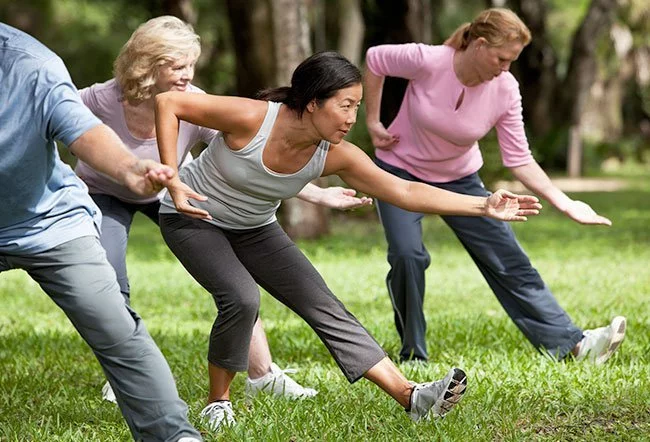
4. Flying Like a Wild Goose
The titles of several positions in tai chi are amusing.
Sit with your feet shoulder width apart and arms at your sides, palms facing in and fingers curved slightly.
Shift forward, putting your weight on the balls of your feet.
Lift your arms away from your sides while inhaling. As you walk, keep your spine straight. Lift your arms over your head as far as you can until your wrists are facing away from your body. If that’s too far for you, only go as high as you can. Extend your wrists and stretch your fingers during the move.
As you exhale and return to the starting posture, let your body sink into the chair.
Rep 5–10 times more.
(If you want to go all out, pretend you’re a flying goose.)
5. Broadening the Chest
Place your feet shoulder width apart and sit (or stand) straight.
Allow your arms to dangle at your sides.
Exhale and straighten your arms in front of you at shoulder level.
Allow your shoulders to relax as you exhale.
Face your palms toward each other, take a deep breath, and open your arms wide, as if inviting someone to hug you. Allow your shoulders to relax once more.
Exhale as you return your hands to their original positions, then lower them to your sides.

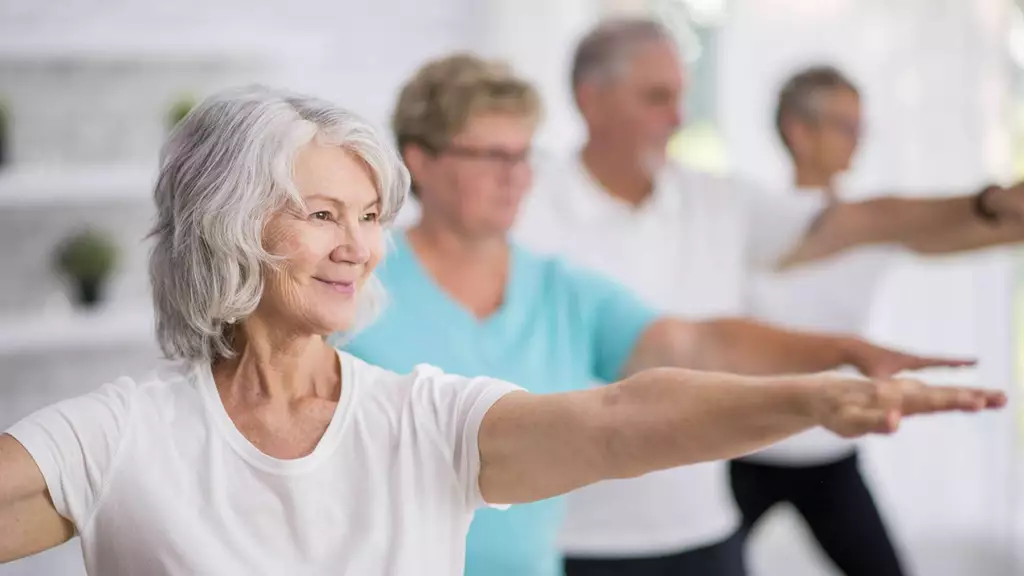
6. Shooting the Bow
This is an easy exercise that you may do while standing.
1. Stand with your feet shoulder-width apart and your arms at your sides loosely.
2. Relax your posture by rounding your back and bending your knees slightly while facing straight ahead.
3. Make a fist and hold it exactly in front of your face, with your fingers facing you and your palms’ heels contacting the sides.
4. Take a calm, deep breath in.
5. Rotate your waist to the left while extending your left hand squarely in front of you as you inhale slowly and deeply.
6. Open your left hand with the palm facing outward. Your left arm should be slightly bent and relaxed.
7. Pull back slightly with your right fist at the same time, as if shooting a bow and arrow.
8. As you return to your starting posture, exhale gently and deeply.
9. Repeat the on the side on your next breath.
10. Perform up to ten repetitions.
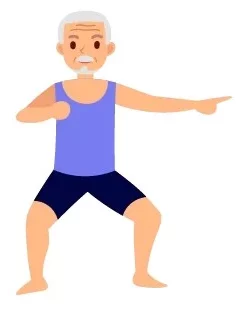
7. Scooping from the Sea
Take a seat in a chair.
Bend forward over your left knee, slightly shifting your weight to the left.
With your wrists crossed and palms facing up, extend your arms beyond your left knee.
As you inhale, raise your arms, separate them, and shift your weight to the right.
Raise your arms as high as you’d like, palms facing back. Assume you’re flinging seawater behind you.
Exhale as you return your arms to a crossed-wrists position over your right knee.
Over each knee, repeat about 5 times.
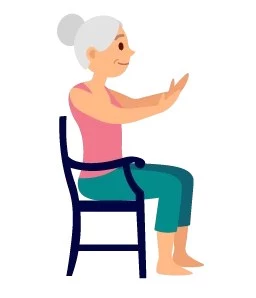
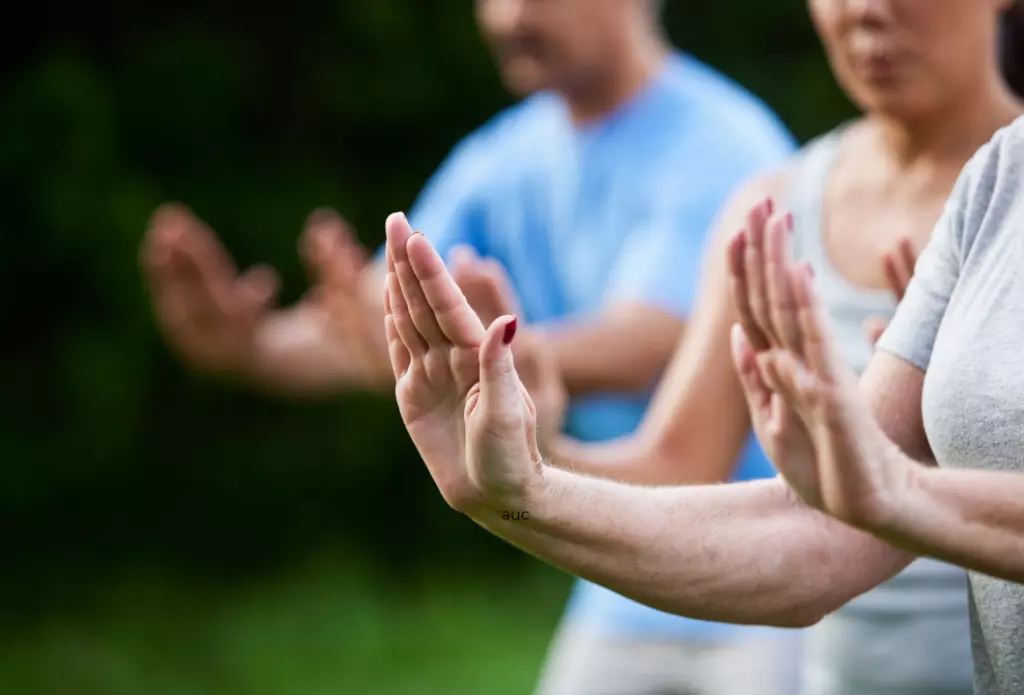
8. The Golden Lion Shakes its Mane
1. Sit up straight in a comfortable chair with your hands lightly on your thighs.
2. Relax and take a few deep breaths in and out. Slowly lean forward as you exhale, feeling the stretch in your lower back.
3. Twist your shoulders to one side as you feel the stretch, allowing your head and neck to turn with your shoulders and spine.
4. Return to your starting position by softly inhaling and twisting your back forward.
5. Switch sides and repeat the movement.
6. As you inhale, reverse the movement and return to the starting position.
7. Repeat on each side for a total of 10 reps.
9. Dancing with the Rainbow
All tai chi exercises involve balance, but this one concentrates on keeping your core stable while the rest of your body moves.
1. Straighten your back.
2. Shift your weight to the right side of your body.
3. Lift your right arm upward with the elbow bent and extend your left arm as you inhale. You’ll look a little like “I’m a little teapot.”
4. Exhale and return your weight to the centre by raising both hands aloft.
5. Lie down on your left side and shift your weight to the left.
6. Inhale and make the shape of a teapot pointing in the opposite direction.
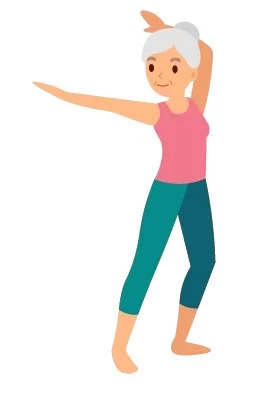
10. Penetrating Heaven and Earth
In addition to being a balance exercise, this also helps to stretch the shoulders.
Inhale and lift your hands to chest height. Rotate the hands so the palms are up and the fingers face each other.
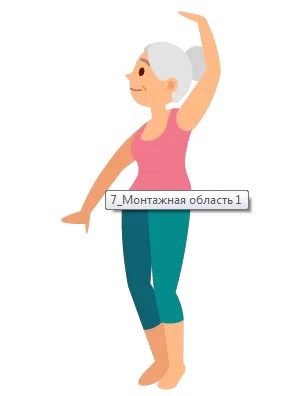
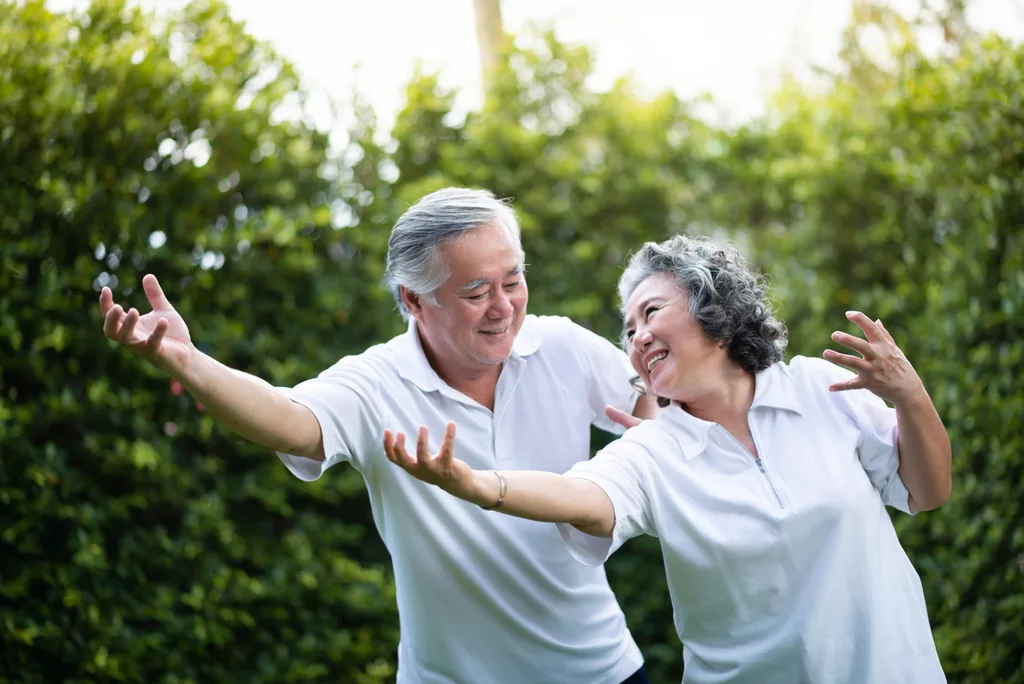
Closing Posture
The Closing Posture is intended to balance your energy and create relaxation and peace. It is usually performed at the end of a Tai Chi session.
1. Stand shoulder-width apart with your feet shoulder-width apart. Relax your shoulders and place your hands in a cupped posture in front of your pelvic bone, palms facing upwards.
2. Close your eyes and picture pushing your energy upwards as you move your hands up to your chest and to the centre of your body.
3. Take a deep breath and flip your hands palms down. As you push your hands toward the floor, imagine you’re pushing your energy down.
4. Do this exercise for another 1 to 2 minutes.
Conclusion
Some of these tai-chi routines don’t appear to be much of a workout. During your session, you may not sweat or strain yet feel excellent at the end. Your body will allow you to take pleasure in the sense of success that comes from utilizing it in the way it was designed to be used.
That’s tai-chi for you. It formalizes the body’s natural movements into exercises that make you accomplish just a little bit more. It aids in the awareness of and improvement of your balance along with refreshing and enlightening your joints. You can learn a few motions in tai chi in a short amount of time and execute them without difficulty. You may potentially spend years investigating all of the possibilities and pushing yourself to new limits.
